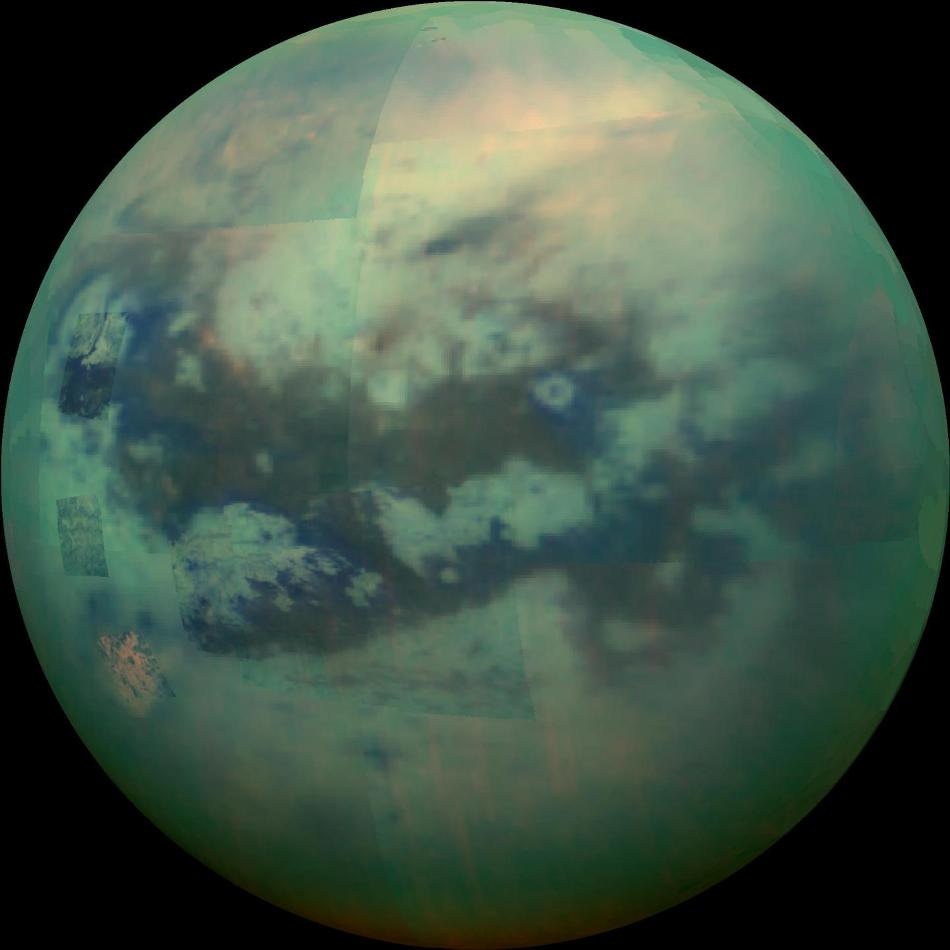Apr 4 2018
According to a new study performed by a research team based at Plymouth University, advances in artificial intelligence may help people to predict the likelihood of life on other planets.
In this study, artificial neural networks (ANNs) were used to categorize planets into five types, predicting a probability of life in each case, which could be subsequently applied in upcoming interstellar exploration missions. Mr. Christopher Bishop will present the work at the European Week of Astronomy and Space Science (EWASS) in Liverpool on 4 April, 2018.
 Composite image showing an infrared view of Saturn's moon Titan, taken from NASA's Cassini spacecraft. Some measures suggest that Titan has the highest habitability rating of any world other than Earth, based on factors such as availability of energy, and various surface and atmosphere characteristics. (Image credit: NASA / JPL / University of Arizona / University of Idaho)
Composite image showing an infrared view of Saturn's moon Titan, taken from NASA's Cassini spacecraft. Some measures suggest that Titan has the highest habitability rating of any world other than Earth, based on factors such as availability of energy, and various surface and atmosphere characteristics. (Image credit: NASA / JPL / University of Arizona / University of Idaho)
Basically, artificial neural networks are systems that try to simulate the way the human brain learns. These systems are one of the most important tools used in machine learning, and they are especially good at detecting patterns, which a biological brain finds it too difficult to process.
Based at the Centre for Robotics and Neural Systems at Plymouth University, the researchers have trained their network to divide planets into five different types, depending on whether they are most like the early Earth, the present-day Earth, Venus, Mars, or Saturn's moon Titan. All the five objects are rocky bodies which are among the most potentially habitable objects in the Solar System and are known to have atmospheres.
We're currently interested in these ANNs for prioritising exploration for a hypothetical, intelligent, interstellar spacecraft scanning an exoplanet system at range.
We're also looking at the use of large area, deployable, planar Fresnel antennas to get data back to Earth from an interstellar probe at large distances. This would be needed if the technology is used in robotic spacecraft in the future.
Christopher Bishop
Atmospheric observations - called spectra - of the five Solar System bodies are first presented to the network as inputs, and then this network is asked to group them based on the planetary type. At present, life is known to exist only on the Earth and therefore a 'probability of life' metric is used by the classification. This metric is based on the moderately well-understood orbital and atmospheric properties of the five target types.
Bishop used more than a hundred different spectral profiles to train the network, and each profile contained several hundred parameters that play a role in habitability.
To date, when the network is presented with a test spectral profile that it has not seen before, it tends to perform well.
"Given the results so far, this method may prove to be extremely useful for categorising different types of exoplanets using results from ground-based and near Earth observatories" says Dr Angelo Cangelosi, the supervisor of the project.
Considering the increase in spectral detail predicted from future space missions, for example, NASA's James Webb Space Telescope and ESA's Ariel Space Mission, the method may also prove useful for choosing targets for future observations.